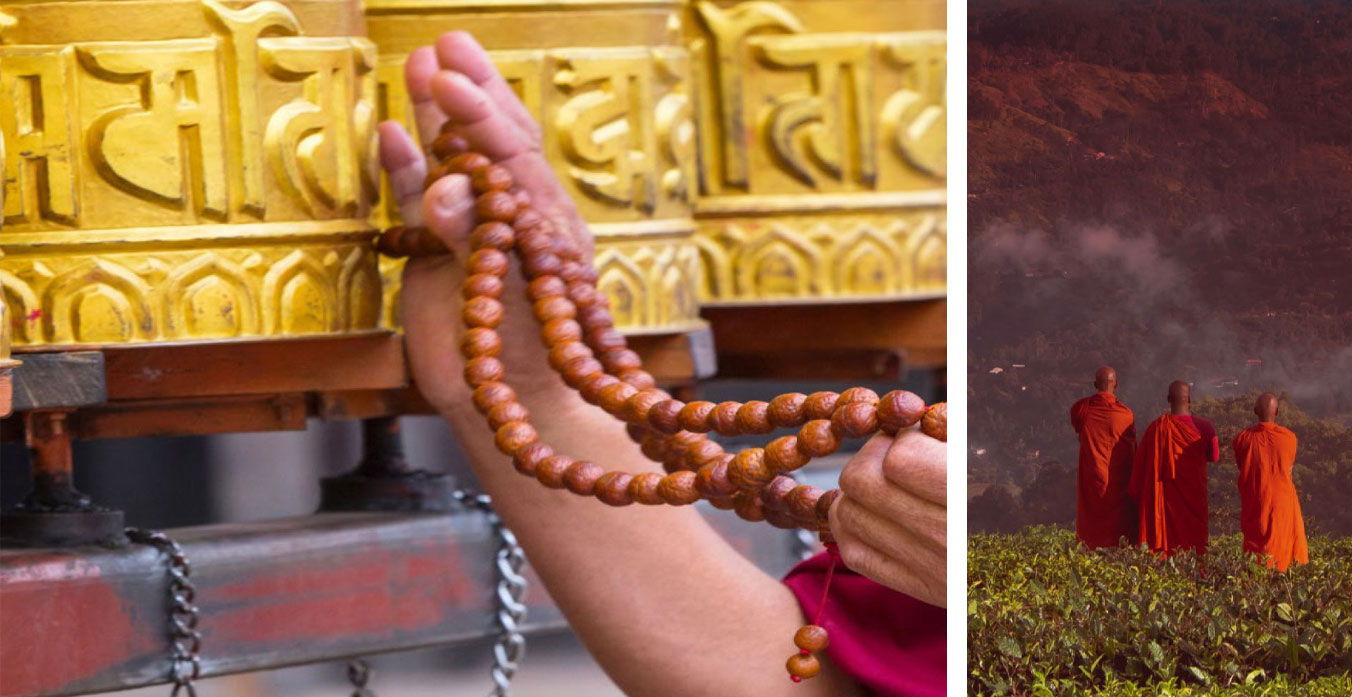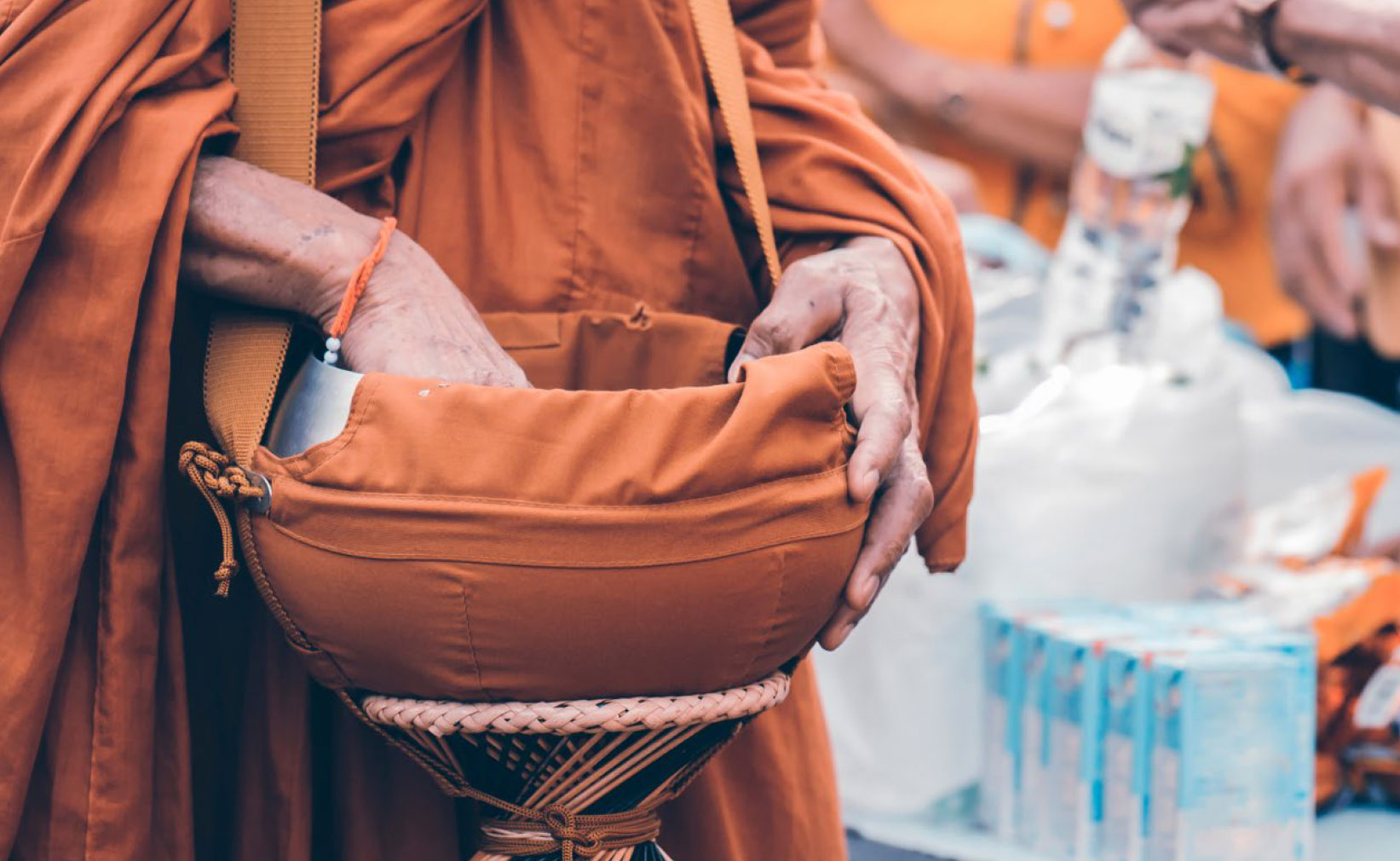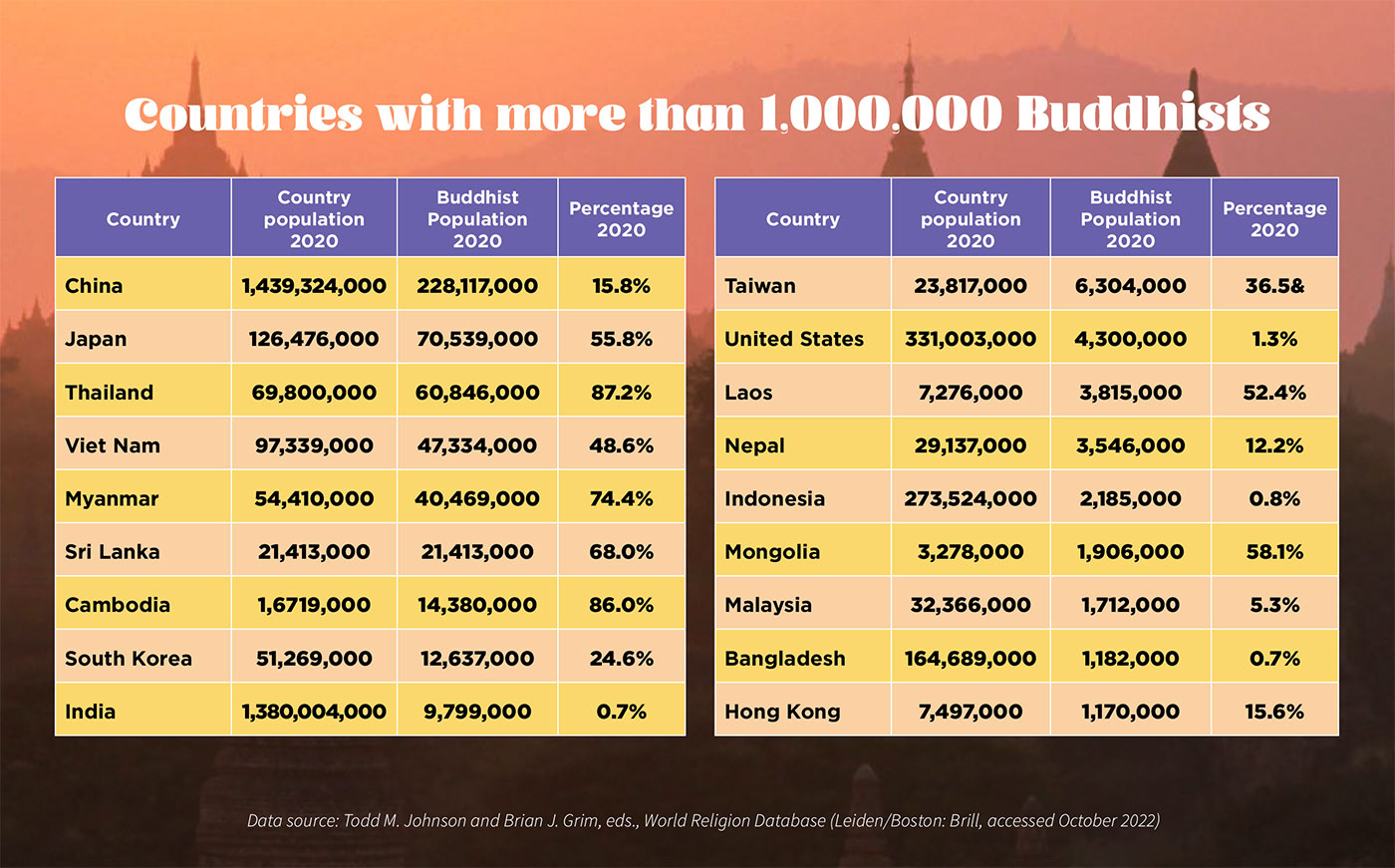សូមស្វាគមន៍
ទៅកាន់មគ្គុទ្ទេសក៍អធិស្ឋានពិភពលោក 21 ថ្ងៃនៃព្រះពុទ្ធសាសនា
“Don’t burn out; keep yourselves fueled and aflame. Be alert servants of the Master, cheerfully expectant. Don’t quit in hard times; pray all the harder.” Romans 12:11-12 MSG Version
ការដាស់តឿននៅសតវត្សទីមួយនេះពីសាវ័កប៉ុលអាចងាយស្រួលដូចដែលត្រូវបានសរសេរនៅថ្ងៃនេះ។ ជាមួយនឹងភាពច្របូកច្របល់ពីជំងឺរាតត្បាត សង្គ្រាមនៅអ៊ុយក្រែន សង្រ្គាមថ្មីនៅមជ្ឈិមបូព៌ា ការធ្វើទុក្ខបុកម្នេញលើអ្នកដើរតាមព្រះយេស៊ូវនៅក្នុងពិភពលោកជាច្រើន និងវិបត្តិសេដ្ឋកិច្ច វាងាយស្រួលគ្រាន់តែលើកដៃរបស់យើងហើយសួរថា "តើយើងអាចធ្វើអ្វីបាន? មនុស្សធ្វើ?
ប៉ុលផ្តល់ចម្លើយដល់យើង។ ចូរផ្ដោតលើព្រះបន្ទូលនៃព្រះ ដោយរំពឹងថាទ្រង់នឹងឆ្លើយតប ហើយ«អធិស្ឋានឲ្យកាន់តែខ្លាំងឡើង»។
ជាមួយនឹងការណែនាំនេះ យើងសូមអញ្ជើញអ្នកឱ្យអធិស្ឋានជាពិសេសថា ព្រះនឹងត្រូវបានគេស្គាល់ដល់មនុស្សមួយពាន់លាននាក់នៅទូទាំងពិភពលោក ដែលយ៉ាងហោចណាស់ជាអ្នកកាន់ព្រះពុទ្ធសាសនា។ ជារៀងរាល់ថ្ងៃ ចាប់ពីថ្ងៃទី 21 ខែមករា ឆ្នាំ 2024 អ្នកនឹងរៀនអំពីការអនុវត្ត និងឥទ្ធិពលព្រះពុទ្ធសាសនានៅកន្លែងផ្សេងៗគ្នា។
មគ្គុទ្ទេសក៍អធិស្ឋាននេះកំពុងត្រូវបានបកប្រែជា 30 ភាសា និងចែកចាយតាមរយៈបណ្តាញអធិស្ឋានជាង 5,000 នៅទូទាំងពិភពលោក។ អ្នកនឹងចូលរួមជាមួយអ្នកកាន់តាមព្រះយេស៊ូជាង 100 លាននាក់ក្នុងការអង្វរសម្រាប់អ្នកជិតខាងដែលកាន់សាសនាព្រះពុទ្ធរបស់យើង។
ទម្រង់ប្រចាំថ្ងៃជាច្រើនផ្តោតលើទីក្រុងជាក់លាក់មួយ។ នេះជាចេតនា។ ទីក្រុងដែលត្រូវបានពិពណ៌នាគឺជាទីក្រុងដូចគ្នាដែលក្រុមអធិស្ឋានមកពីព្រះវិហារក្រោមដីកំពុងបម្រើនៅថ្ងៃដែលអ្នកកំពុងអធិស្ឋាន! ការអង្វររបស់អ្នកលើការងាររបស់ពួកគេនៅជួរមុខគឺមានសារៈសំខាន់ខ្លាំងណាស់។
យើងសូមស្វាគមន៍អ្នកក្នុងការចូលរួមជាមួយនឹងពួកយើង ដើម្បីនៅតែ«រង់ចាំដោយរីករាយ» និង «អធិស្ឋានឲ្យកាន់តែខ្លាំង»។
ព្រះយេស៊ូវជាព្រះអម្ចាស់!

The origin of Buddhism
Prince Gautama was born in the southern part of modern-day Nepal in the sixth century BC. A local shaman noticed marks on the child’s body and foretold that he would grow up to be a world ruler and enlightened one. His father, desiring Gautama to be a great ruler, sought to protect him by providing a life of luxury.
At age 29, however, Gautama was exposed to the suffering outside the palace where he lived. As a result he spent six years as a wandering ascetic in search of a solution to the problem of suffering. In vain he tried various meditation techniques, hoping for insight. Finally, he resolved to sit beneath a bodhi tree until he had attained the enlightenment he sought. Though tempted by Mara (the Evil One), he persisted and eventually achieved what he believed to be a realization of supreme truth. From that point on he was considered to be the “Buddha”, which means an “Awakened One” or “Enlightened One”.
The teaching of Buddha (called the Dharma*)
The Buddha found his original companions in the search for enlightenment and preached his first sermon to them. Unlike most religions there was no supreme deity involved. Instead he outlined the “Four Noble Truths”:
- Life is full of suffering.
- Suffering arises from ignorance and desire.
- Suffering can only cease by ending ignorance and desire.
- The way to end ignorance and desire is through the “Middle Way” or “Noble Eightfold Path”.
“Suffering” according to the Buddha arises due to our clinging to and craving for impermanent things that keeps us all caught in an ongoing process of death and rebirth where everything, even one’s very self, is impermanent and an illusion. The only way to get off that endless cycle of rebirths is to walk the “The Middle Path”, avoiding extremes and living with right understanding, thought, speech, conduct, livelihood, effort, mindfulness, and finally right concentration. The end-goal is not eternal communion with God, but rather—like the flame of a candle being extinguished—a state where craving is ended.
Actual Buddhist practice today
People see Buddhism as their own folk religion, even though it does not relate to a high deity. As such, it’s like a blanket that falls on existing cultures and conforms to the landscapes underneath. In Tibet, the Bon religion of shamanism was overlaid with Buddhist monasteries for meditation. In Buddhist Thailand, lay people offer monks cigarettes in their alms bowls; in Buddhist Bhutan, however, smoking is a sin. The Thai Buddhist council strictly disallows women’s ordination and forbids women from entering holy places inside temple grounds, yet Nepal and England ordain female monks. Cambodian Buddhists have no discussion in the temple concerning care for the environment, while Western Buddhists incorporate environmental activism into their practice of the dharma.
* For clarity, this guide follows the Sanskrit spelling of Buddhist terms, rather than the Pali spelling. Dharma is the Sanskrit spelling; the Pali spelling would be dhamma.

There are three major streams of Buddhism:
Theravada, Mahayana and Tibetan.
Theravada Buddhism
emerged from Sri Lanka, where the Buddha’s sermons and teachings were first canonized. It focuses on the attainment of enlightenment through personal meditation and good deeds. Myanmar, Thailand, Cambodia, and Laos follow this tradition.
Mahayana Buddhism
emerged based on texts attributed to Buddha, which taught that a bodhisattva, or enlightened being, could choose to delay entering nirvana (the ultimate spiritual goal of liberation) to deliver other sentient beings from their karmic suffering (based on a person’s past actions). This stream of Buddhism was traditionally practiced in China, Japan, Vietnam and the Korean peninsula.
Tibetan Buddhism
arose in India in AD sixth century, with a focus on accelerating enlightenment through ritual practices and visualizing heavenly bodhisattvas.
In recent years Westerners have adopted various forms of Buddhism that focus primarily on a quest for inner peace. Some have joined Theravada monasteries, seeking spiritual purification through meditation and by following the five basic rules of conduct. Others have committed themselves to a Tibetan lama (monk), study the Tibetan texts and learn chanting. Still others follow a Westernized form that mixes Asian traditions with Western notions of Buddhism. They often continue in their previous occupations and wear everyday clothes, but spend time in meditation and attend retreats.
In recent years Westerners have adopted various forms of Buddhism that focus primarily on a quest for inner peace. Some have joined Theravada monasteries, seeking spiritual purification through meditation and by following the five basic rules of conduct. Others have committed themselves to a Tibetan lama (monk), study the Tibetan texts and learn chanting. Still others follow a Westernized form that mixes Asian traditions with Western notions of Buddhism. They often continue in their previous occupations and wear everyday clothes, but spend time in meditation and attend retreats.









